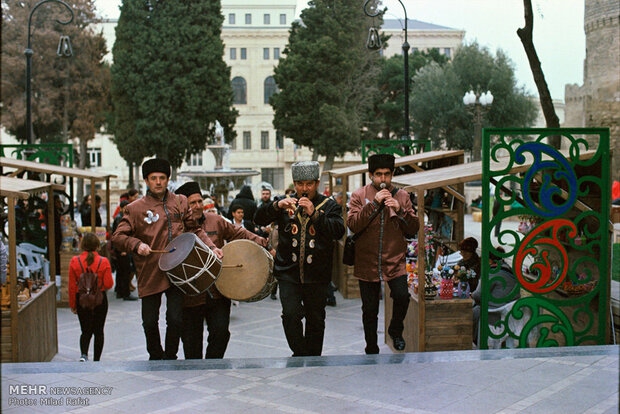Nowruz (literally translated from Persian as �new day�), is celebrated on March 21 � when winter ends and spring begins. According to the solar calendar, it also marks a new year.
The origins of Nowruz stem from ancient Iranian�culture, signifying the time when the sun enters the Vernal Equinox.
The first recording of Nowruz comes from a 2 A.D. Persian text, though many historians also believe that Nowruz traditions go all the way back to the days of the Achaemenid Empire.
The holiday is today widely celebrated in Iran, Azerbaijan, Kazakhstan, Turkmenistan, Afghanistan, and other Central and West�Asian countries.
Reflecting a common history, cultural and moral values for almost all in the Caspian region, the�3000-year-old�Nowruz holiday,�is celebrated by millions in the Caspian region who welcome the arrival of Spring with ancient but still popular celebrations.
After Iran, Azerbaijan hosts the longest observance and number of public days related to Nowruz, with a total of 5 days from�20 March to 24.
When Azerbaijan was part of the Soviet Union, the celebration of Nowruz�was generally unofficial and at times even prohibited, however, today, Nowruz is treated as an official public holiday and it�can be considered as one of the most�cheerful�holidays in Azerbaijan.
Despite similarities across national boundaries, there are peculiar traditions specific to the various ethnicities found in the Caspian region. The people of Azerbaijan are no exception to this and they�have their own customs and traditions to greet spring.

"Charshanbas" celebrations in Azerbaijan
Inspired by the rebirth of nature in�spring, Nowruz celebrations in Azerbaijan are intertwined with�four elements of nature including water, fire, earth, and wind.
In Azerbaijan, as a tradition,�preparation for Nowruz begins a month prior to the festival.
Symbolizing the end of the old year and the beginning of the New year, the last four Wednesdays of winter leading to Nowruz are celebrated by Azerbaijanis which is called �Charshanbas�.
Water Wednesday, Fire Wednesday, Wind Wednesday, Earth Wednesday, are celebrated by�Azerbaijani people so as to prepare themselves for spring arrival.
According to folk belief, the first Charshanba represents water and celebrates its purifying nature. The second Charshanba relates to the element of fire.
It is believed that the action of jumping over bonfires and lighting candles renews a person and purges them of illness, allowing them to start the spring with positivity.
The third Charshanba in the Azerbaijani tradition represents wind, which brings the beginning of spring into the air.
In some western regions of Azerbaijan, the people call this day Black Wednesday which is supposed to visit and restore the graves of their relatives.
The fourth and last Charshanba represents earth, known as �Torpag Chershenbesi� or �Ilakhir Charshanba�.
It is believed that on this day nature revives again. Azerbaijanis consider this Charshanba as the most important among the four and hold special traditions related to this day.
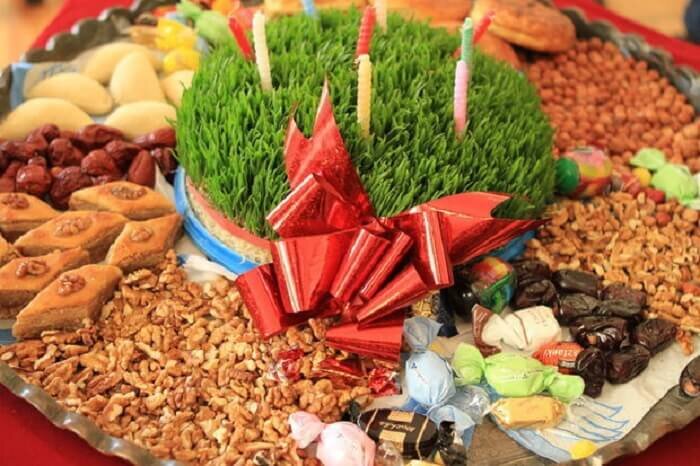 Xoncha
XonchaNowruz table cuisine
Nowruz is a family holiday in Azerbaijan. In the evening before the holiday, entire families gather at home and sit around a table symbolizing that they have spent a year together.
Custom dictates that there should be seven varieties of food on the table and all of their names must start with the letter 's' in Azerbaijani, such as sumakh (a kind of spice), sud (milk), sirke (vinegar), Semeni (prepared from wheat).
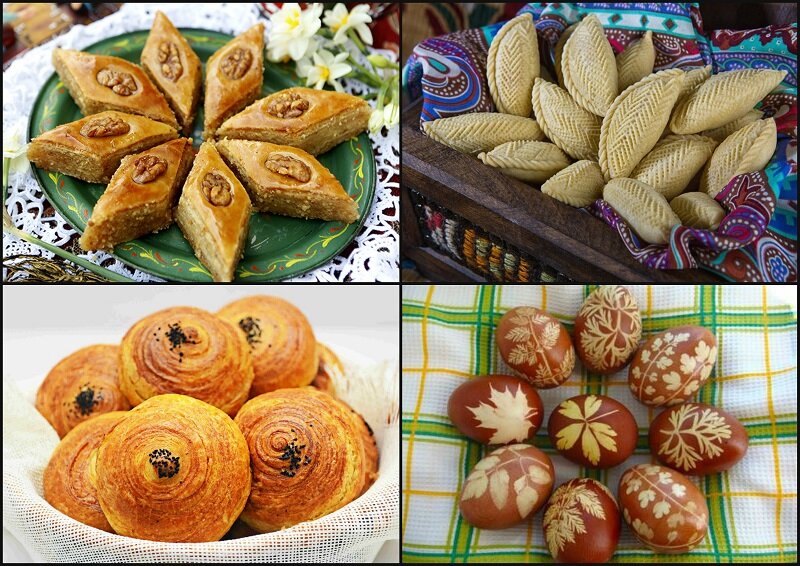 Pakhlava (upper left), shekerbura (upper right), goghal (bottom left) and dyed eggs
Pakhlava (upper left), shekerbura (upper right), goghal (bottom left) and dyed eggsThe decoration of the festive table is known as Xoncha, a large silver or copper tray, in which�Semeni, candles, and dyed eggs are placed.
Meanwhile, traditional sweets of the Azerbaijani cuisine, such as pakhlava, shekarbura, shorgogal, and badambura, are cooked and served at the festive table every year.
Also "govurgha" (toasted wheat) is mixed with nuts (mainly walnuts, hazelnuts, almonds, and chestnuts) and placed on the table along with other sweets.
There must be a mirror and burning candles on the festive table (mirror is the symbol of happiness and the light of the candle keeps the evil spirits away from the house).
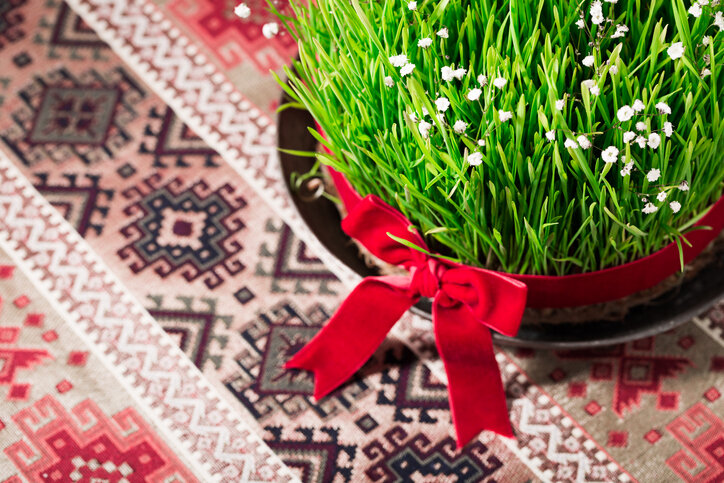 Semeni
SemeniNowruz Customs and Ceremonies in Azerbaijan
During Nowruz, various traditional games and shows such as �Khidir Ilyas� (the symbol of fertility and blossom), and fortune-telling are held at musical gatherings.
One especially notable portion of the festival is the traditional comedic performance of the story of Kosa and Kecel � permanent characters in the holiday narrative.
These personas and their fighting represent the conflict between Winter and Spring. At the end of the ceremony, Kecel wins the duel, indicating the victory of Spring over Winter.
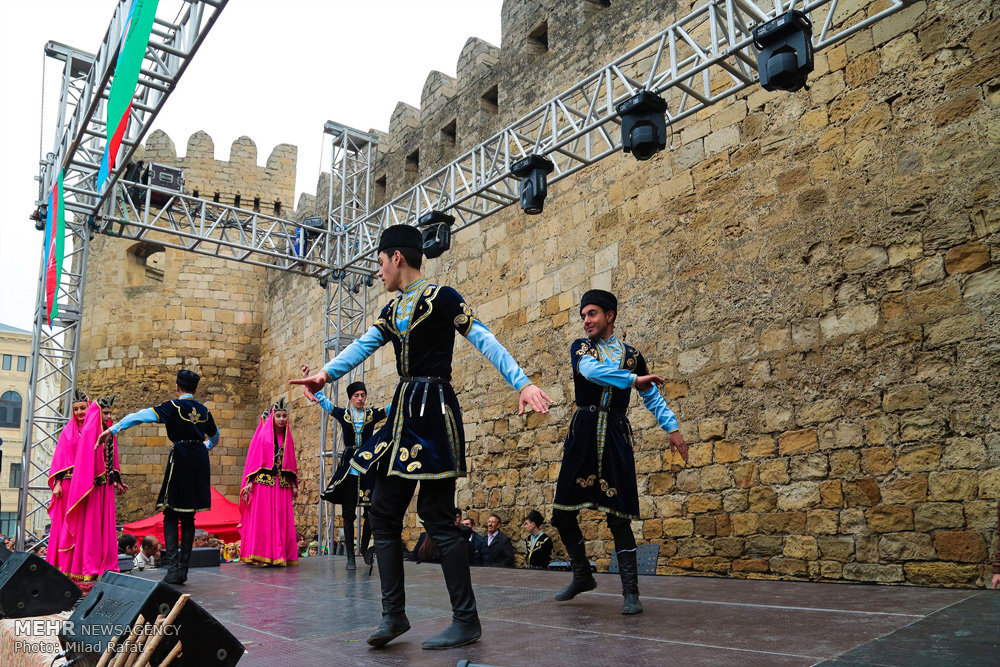
Children knock at the doors of neighboring houses and leave their hats or bags, hoping for candies and desserts such as shekerbura and pakhlava.
People do house cleaning, plant trees, make new dresses, paint eggs.
During the Nowruz holiday, various songs related to Nowruz are sung and different activities such as tightrope walking and wrestling take place in the public squares.
The holiday goes on for several days and ends with festive public dancing, contests of national sports, and other entertainment such as folk bands.
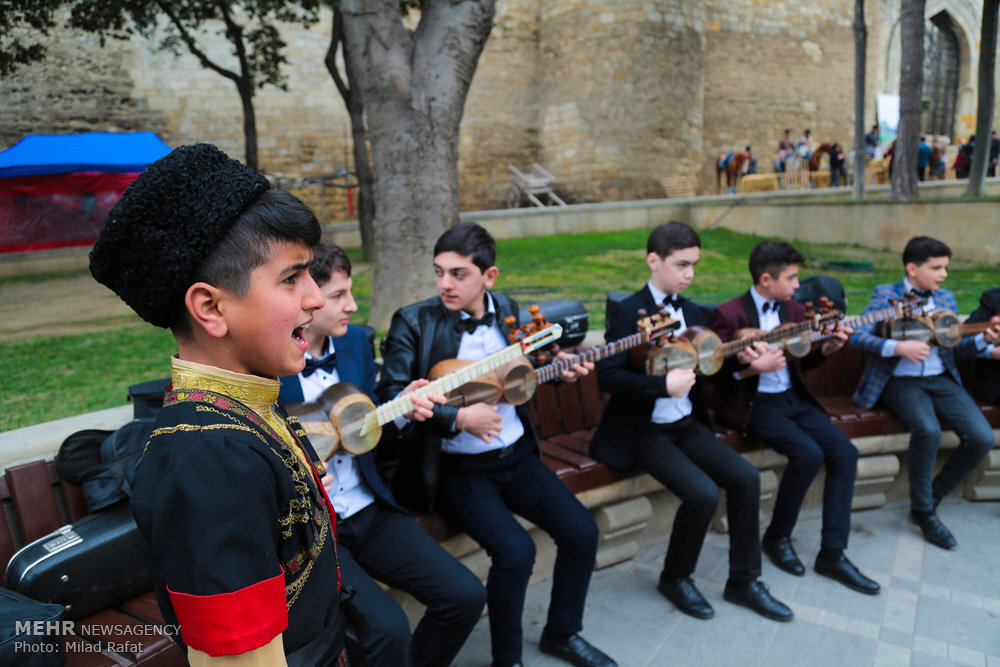
Beliefs related to Nowruz in Azerbaijan
As a tribute to pre-Islamic beliefs, every Tuesday during the four weeks before the holiday, children jump over small bonfires, and candles are lit.
It is believed that jumping seven times over fire will burn the hardness of the old year.
On the last night of the year, family members sprinkle water on each other to wash off�all hardships of the old year, because the water is a symbol of cleanliness and freshness.
As a tradition, the graves of relatives are visited and tended.
During holidays, the doors are not locked so as to show guests the hospitality of the host.
On the first day of Nowruz, the houses must be lit during the whole night. Putting the light off is related to bad luck.
By MEHR�
